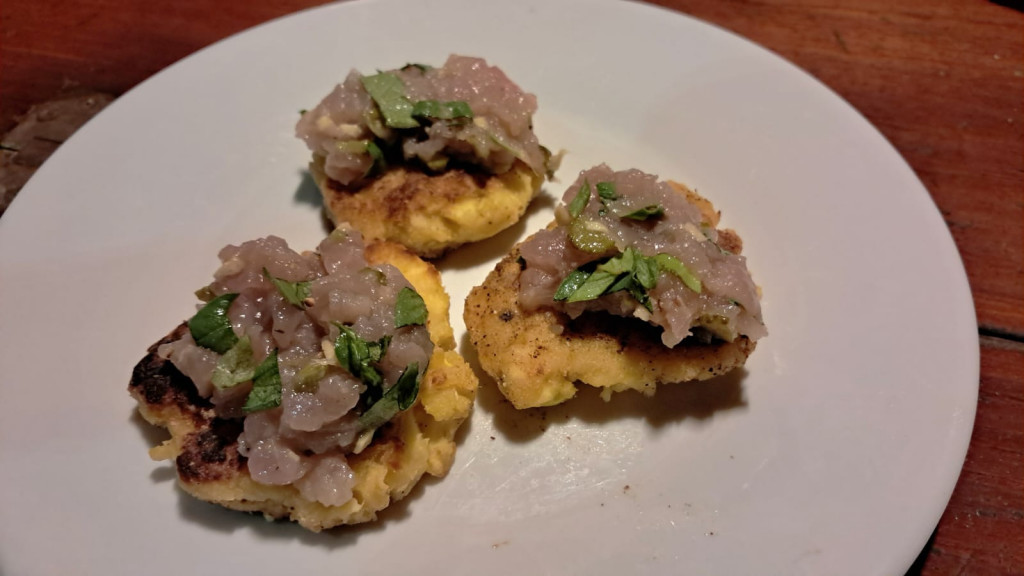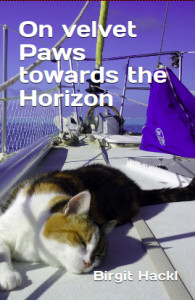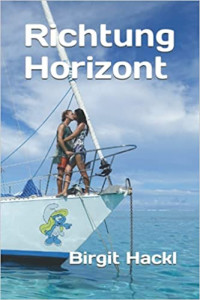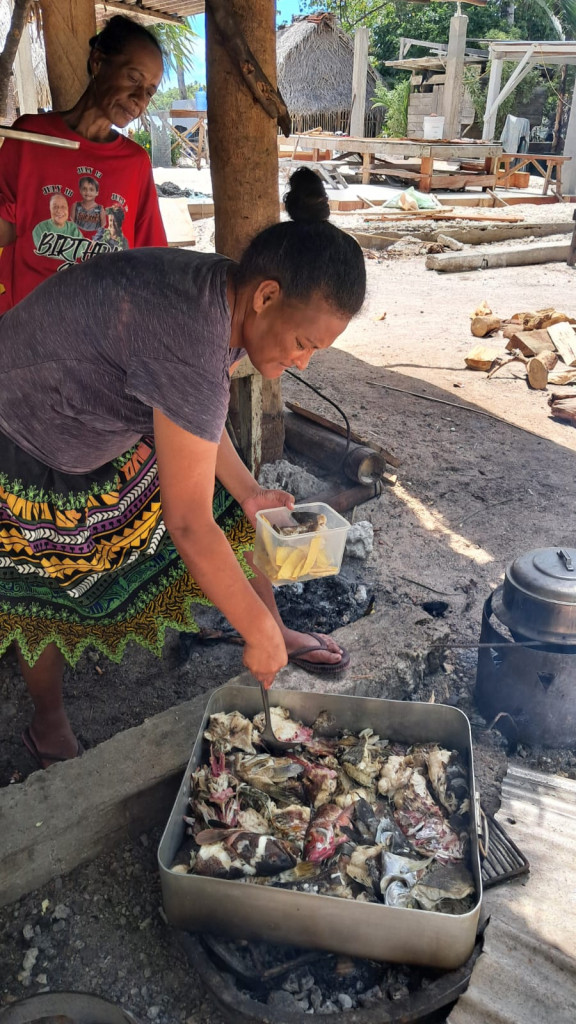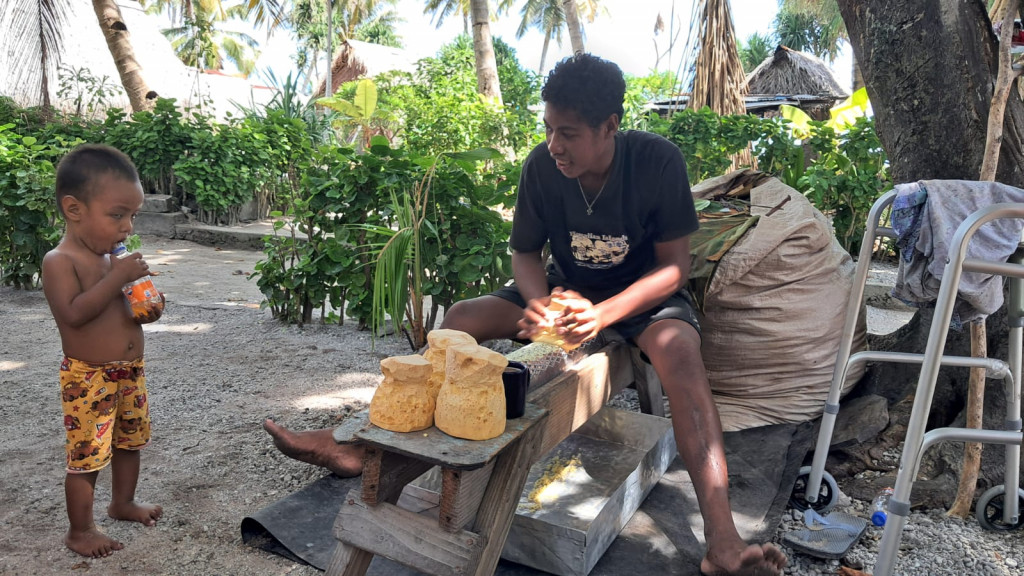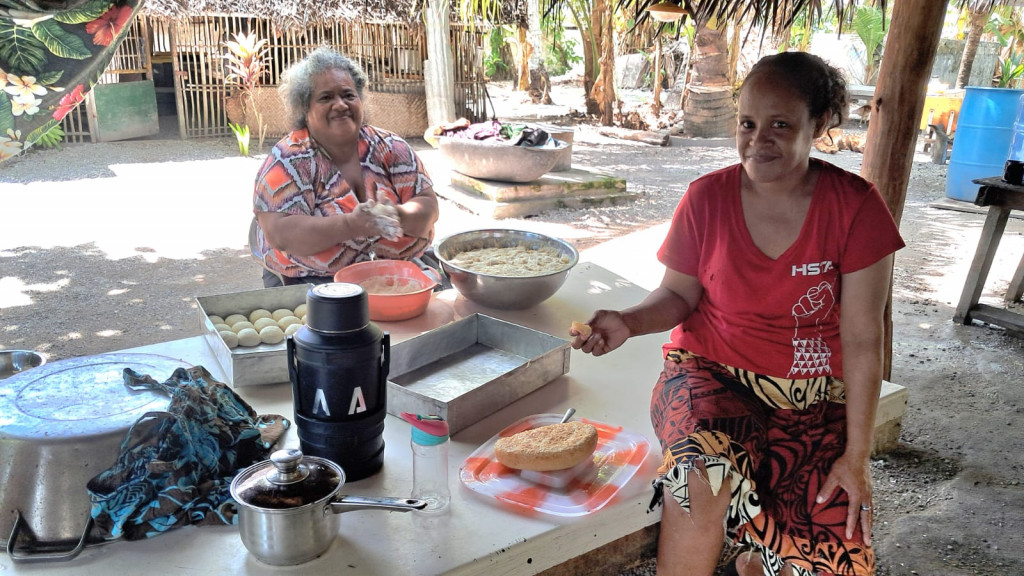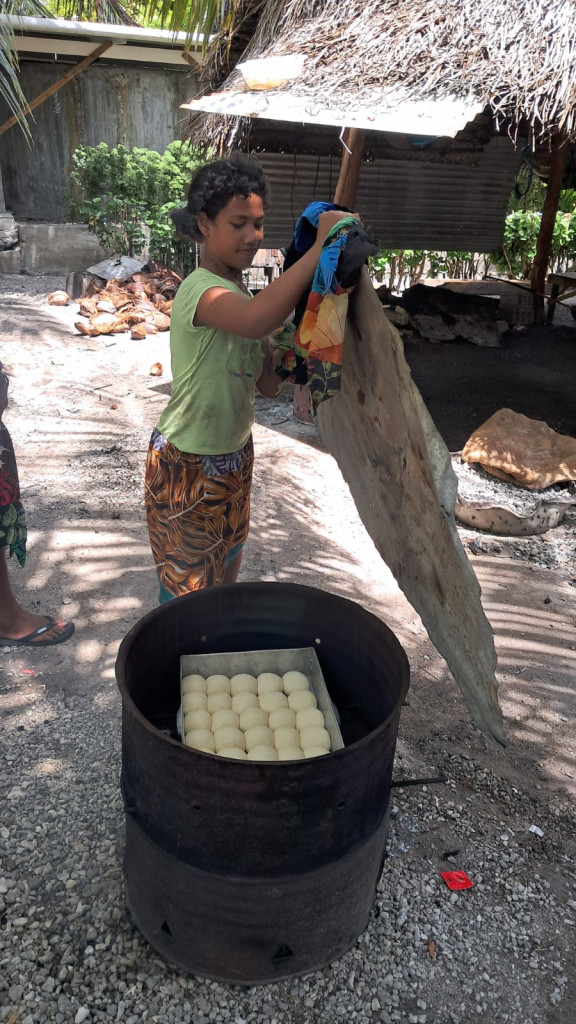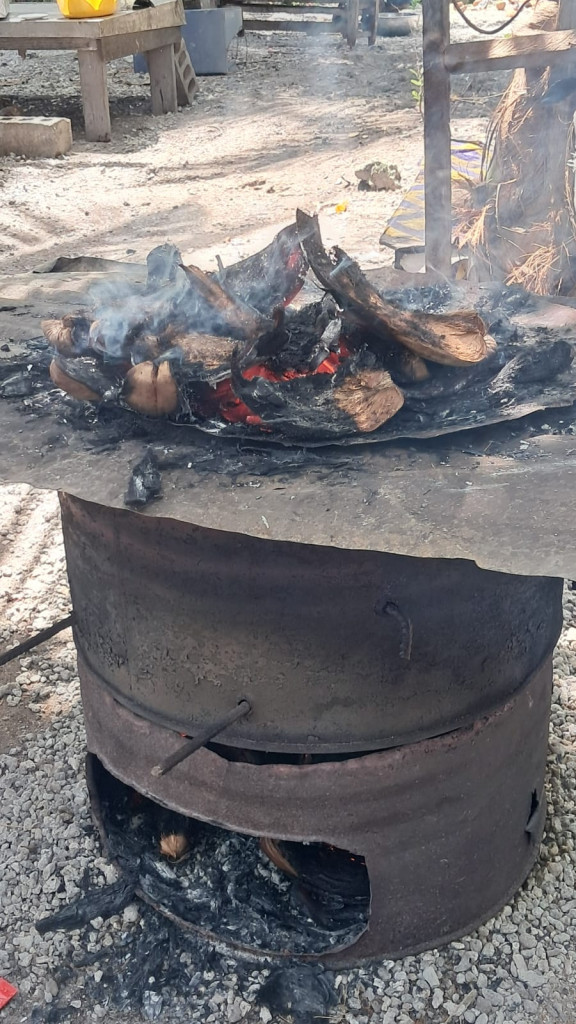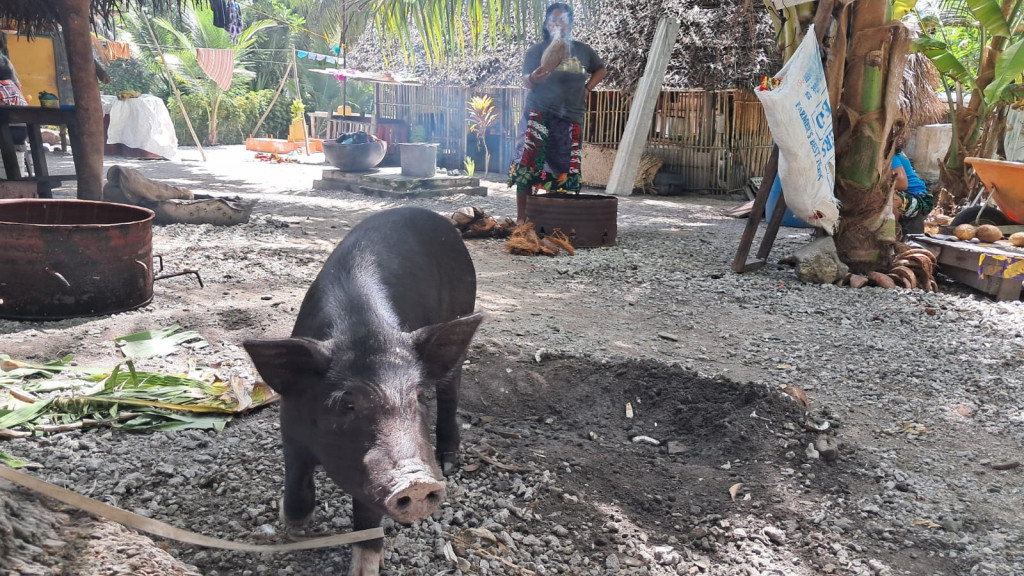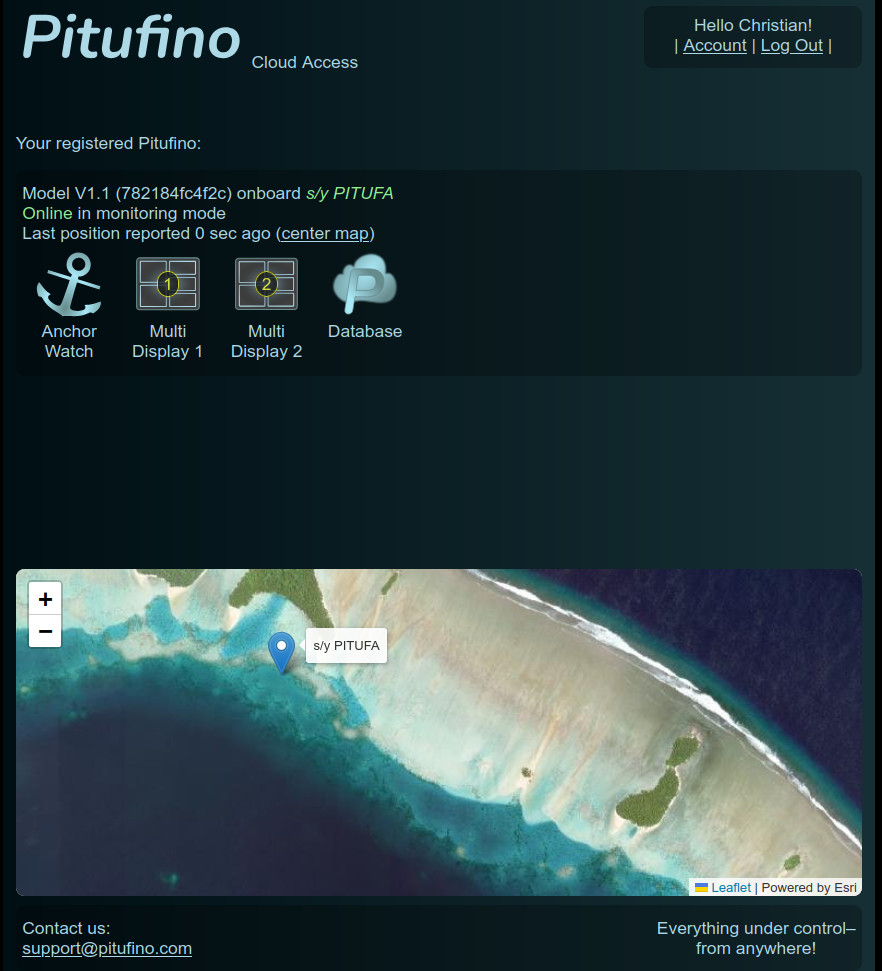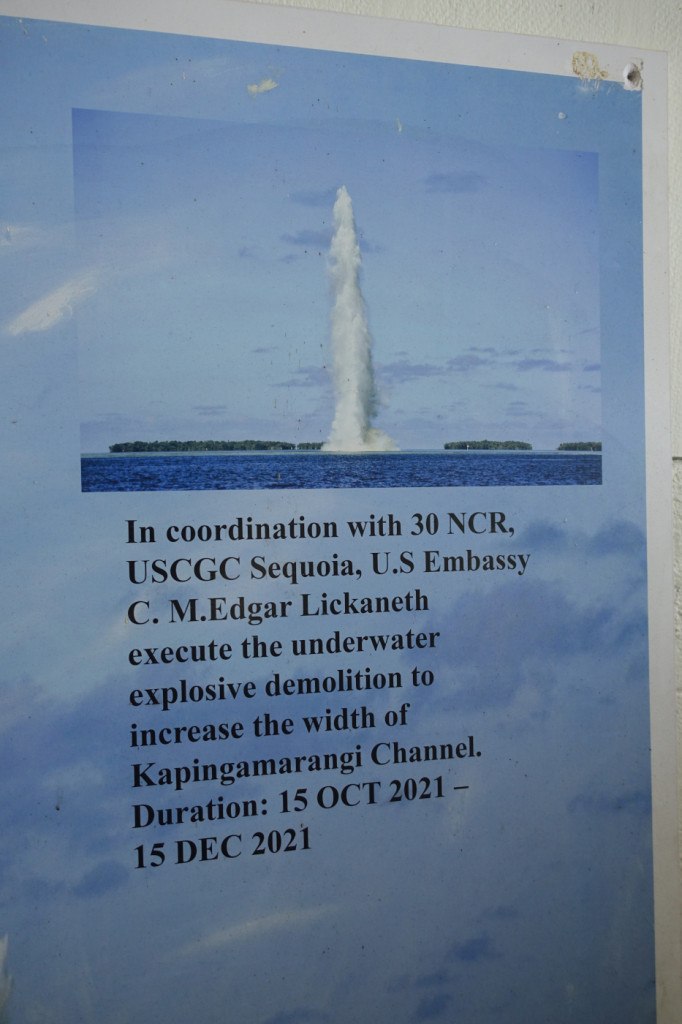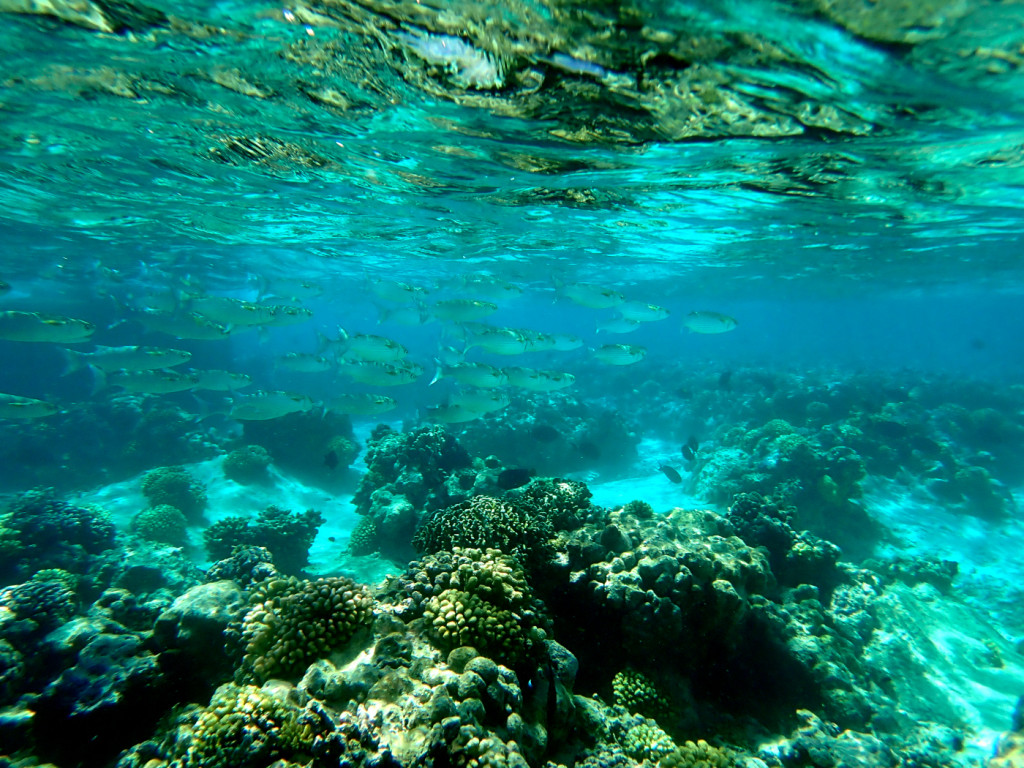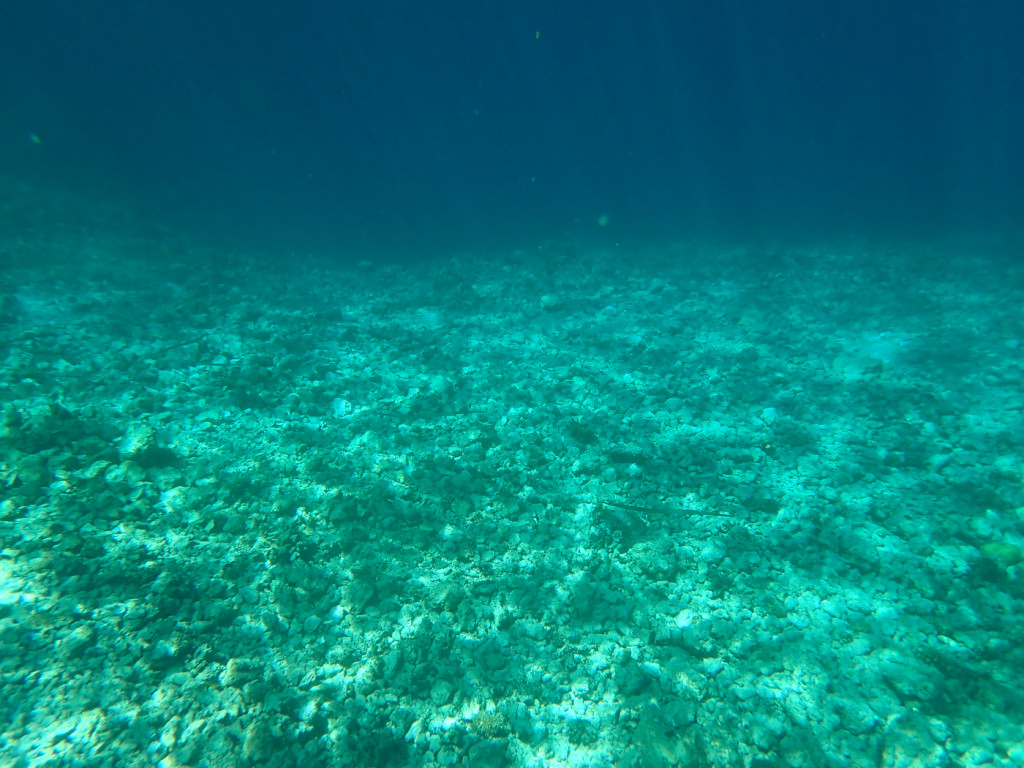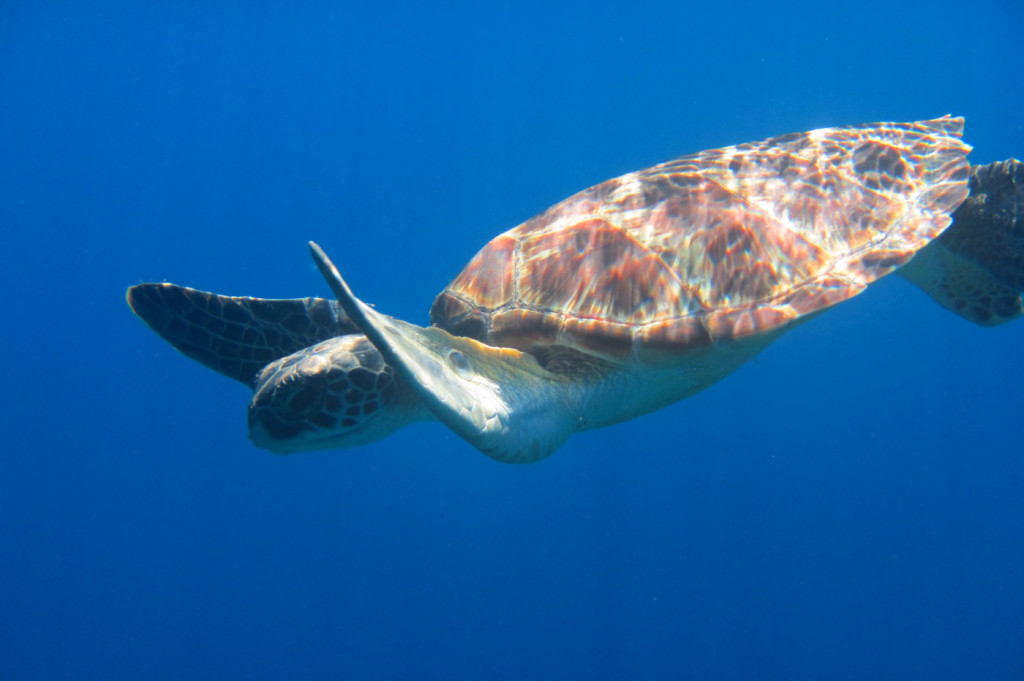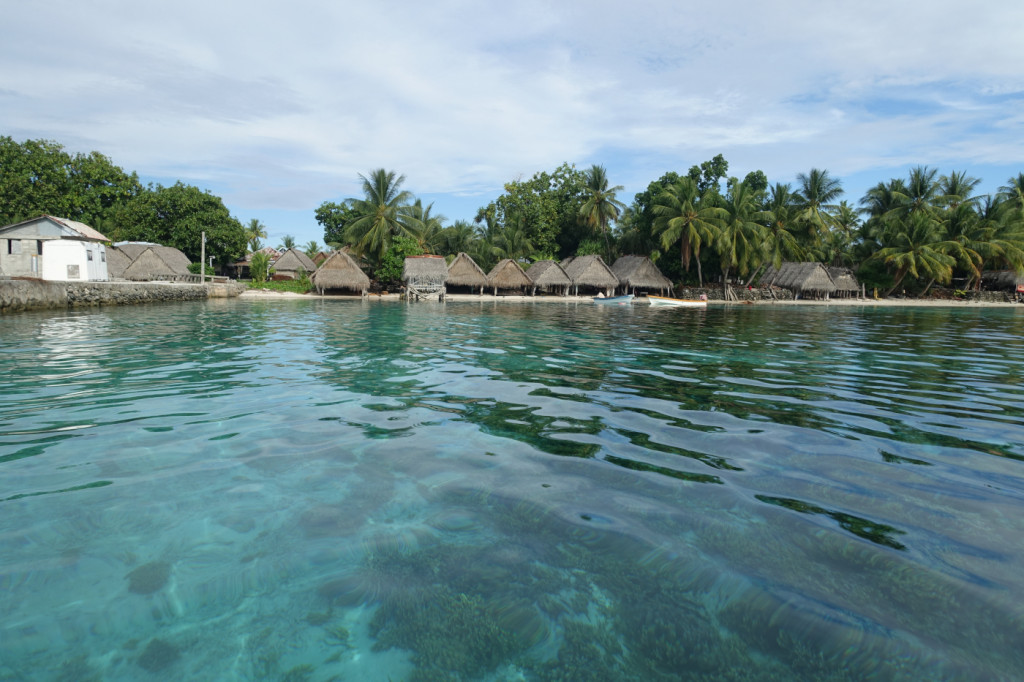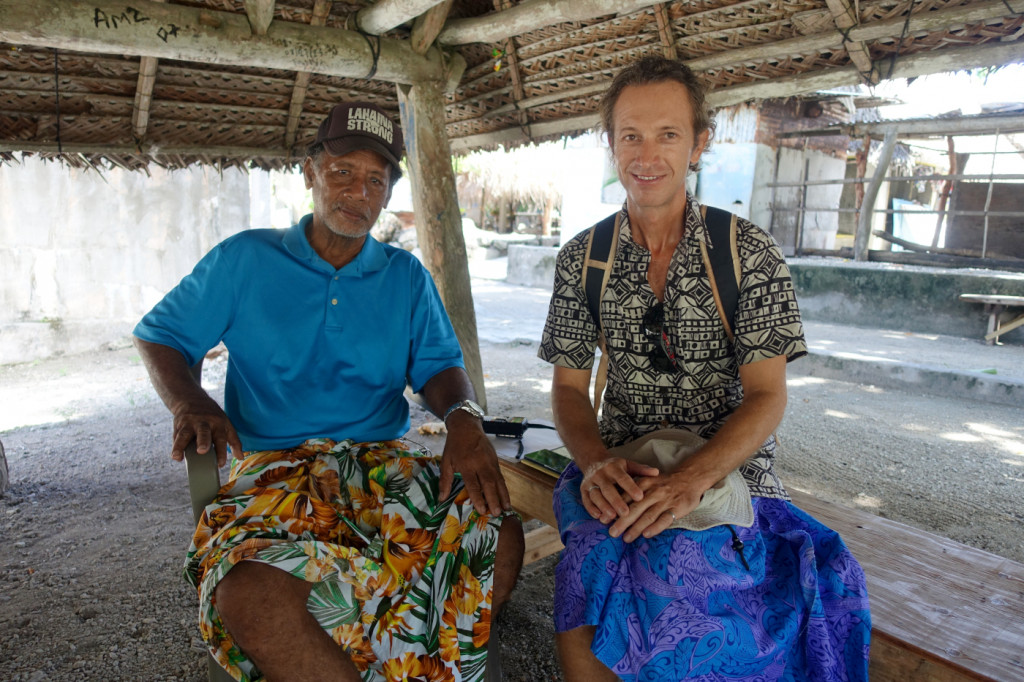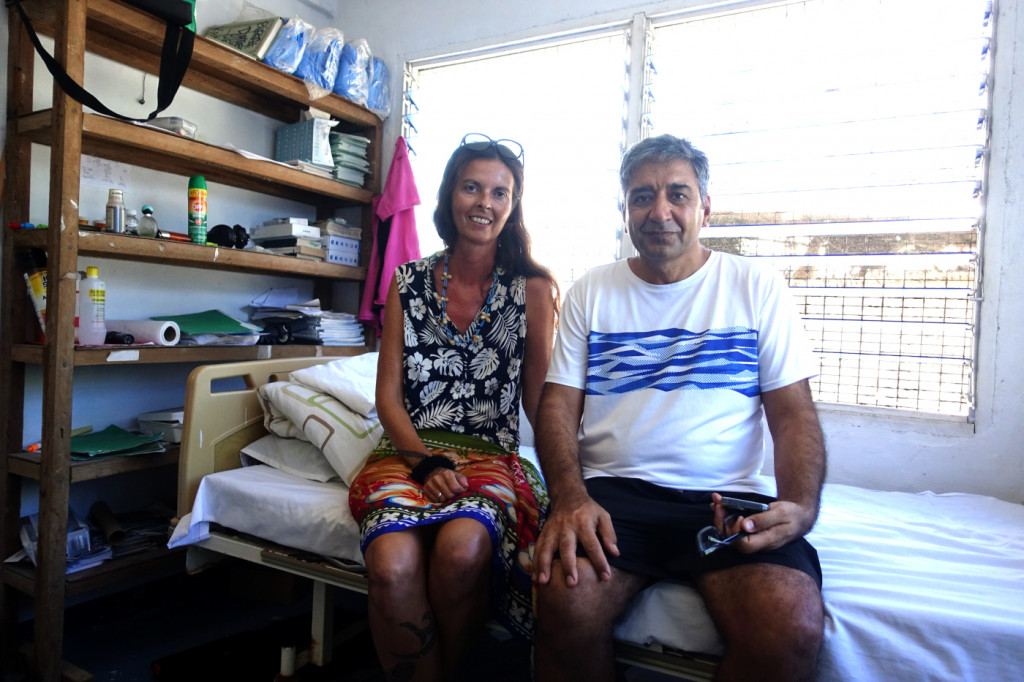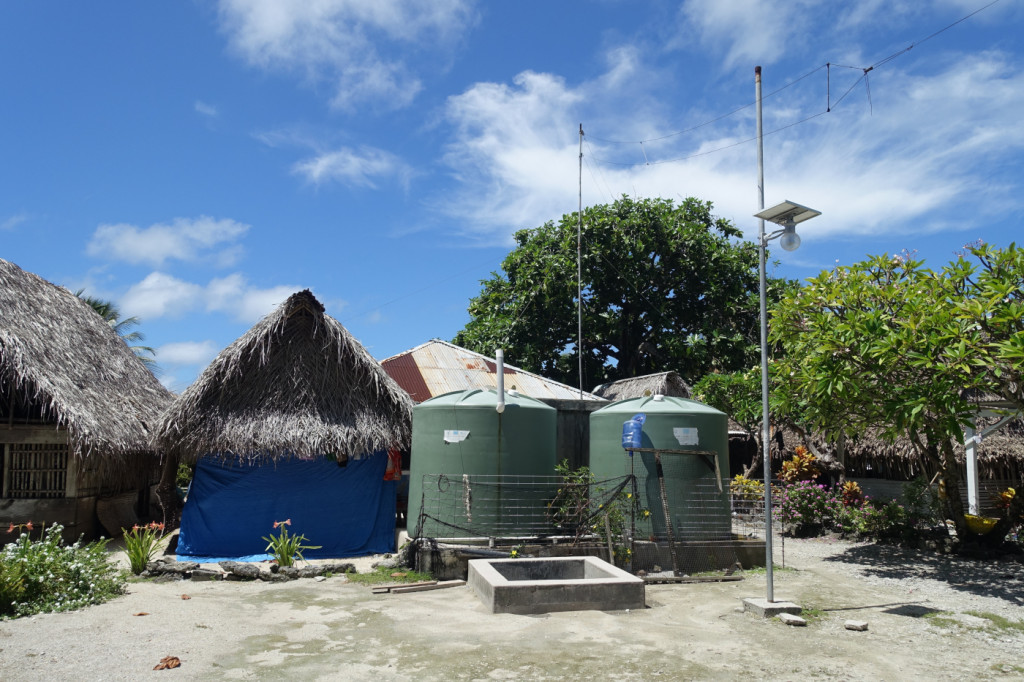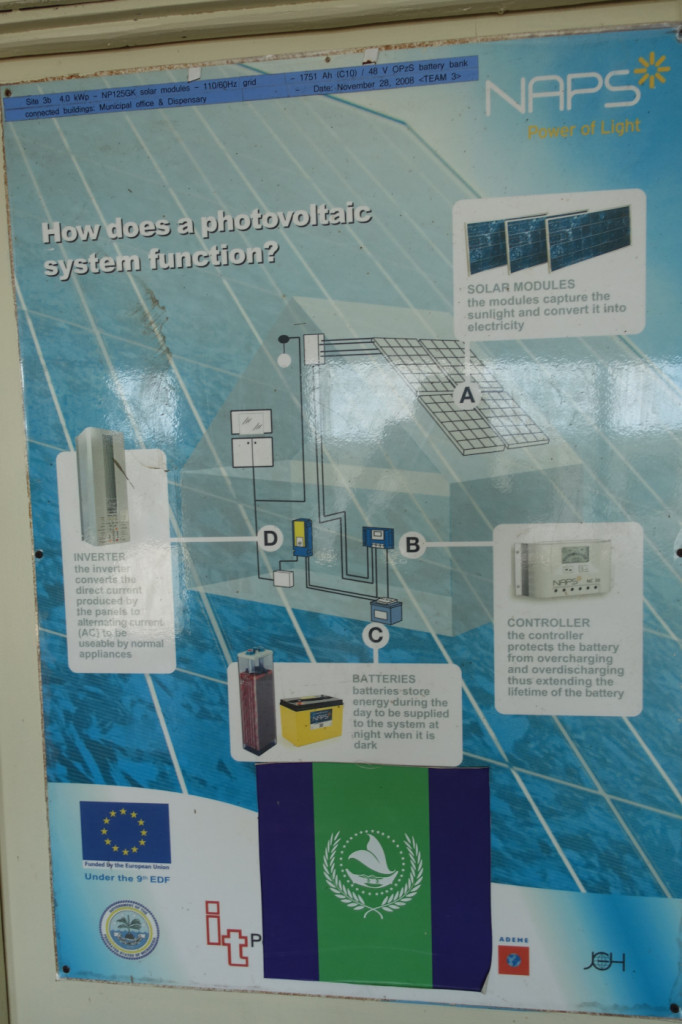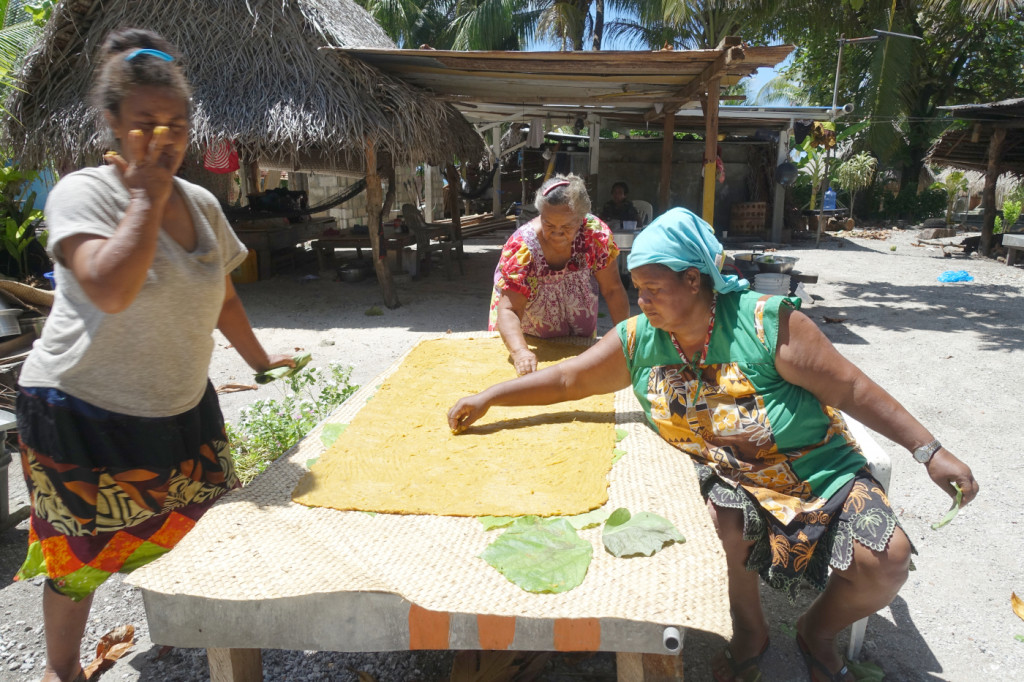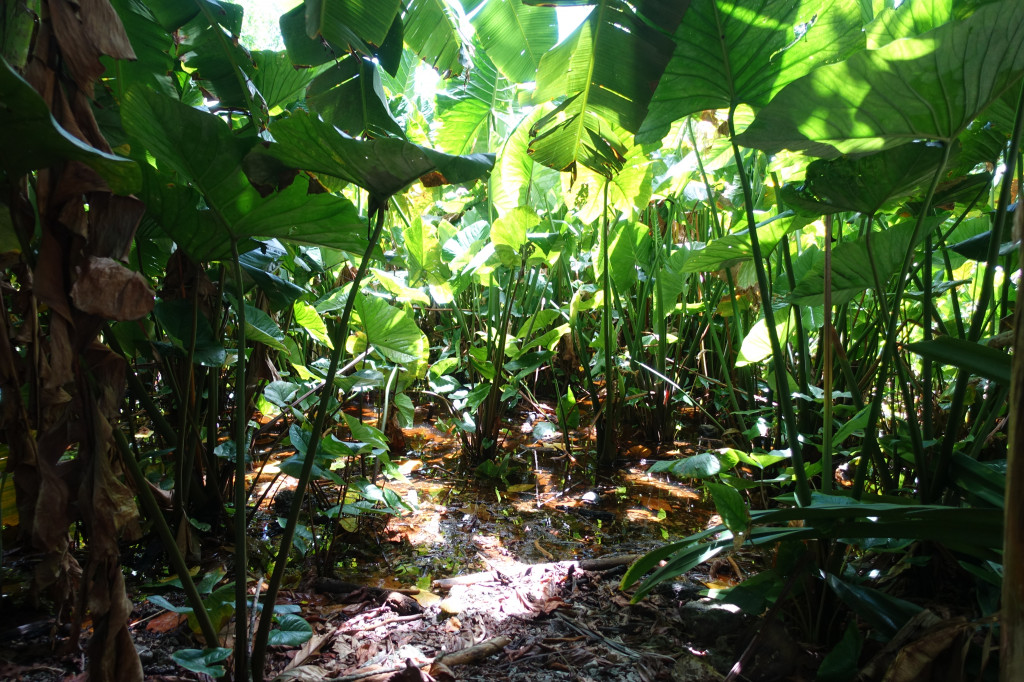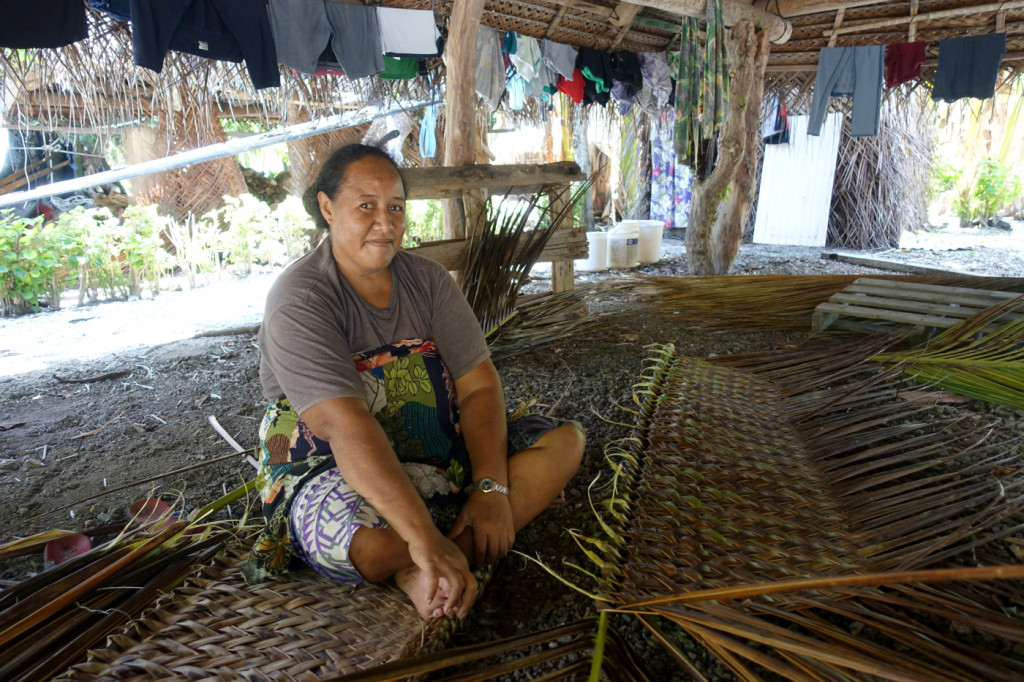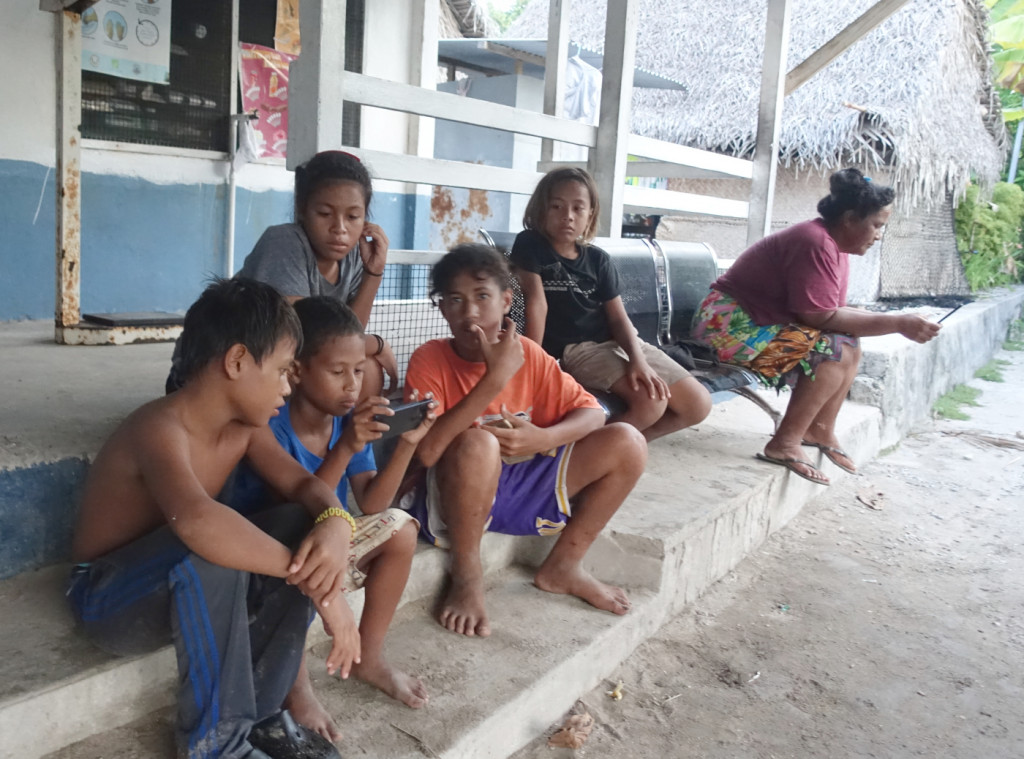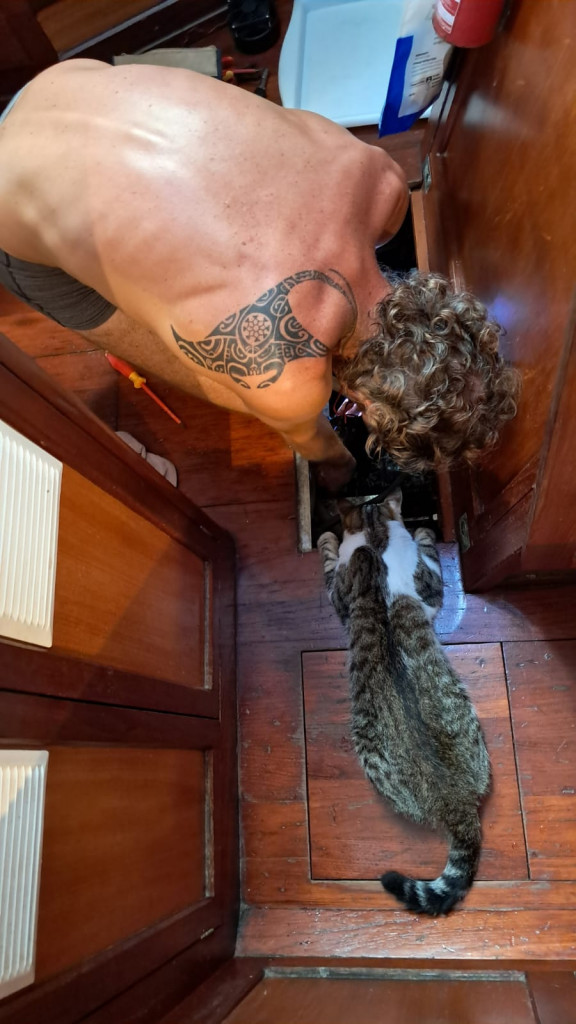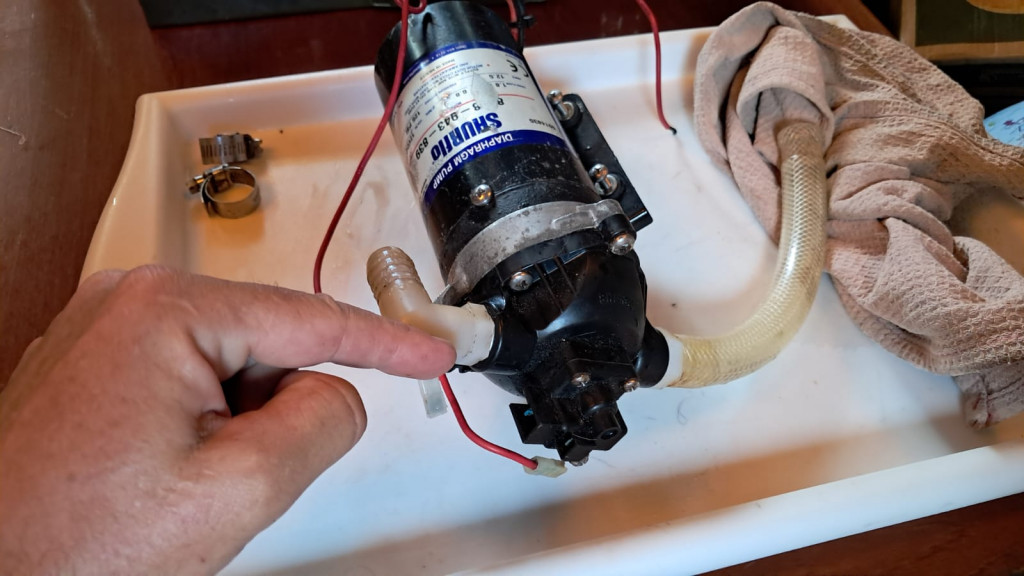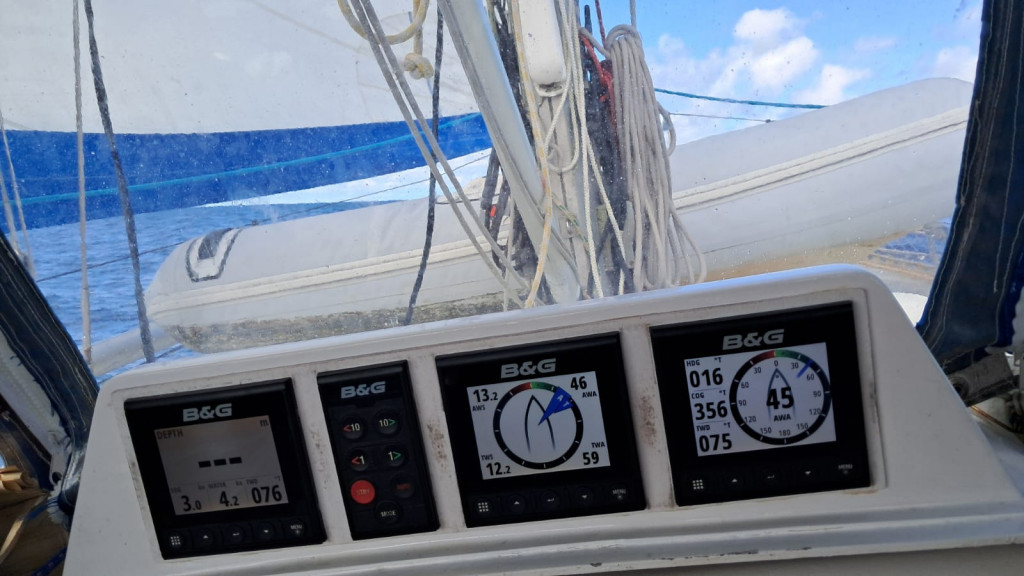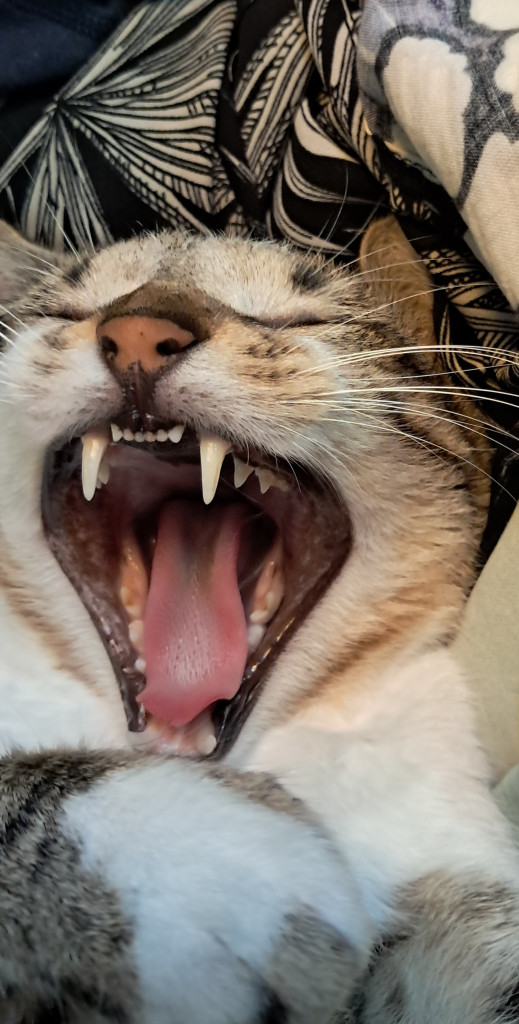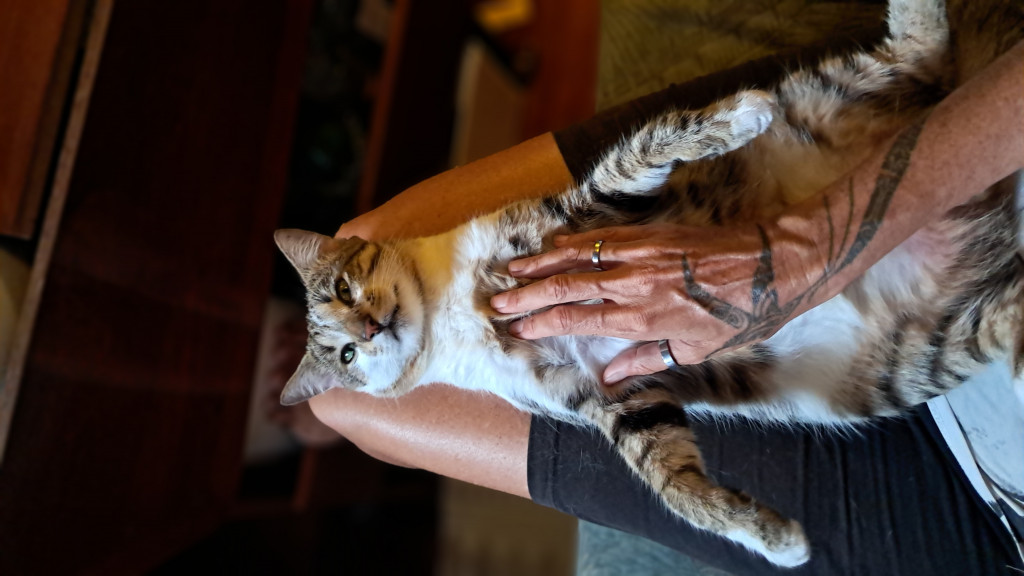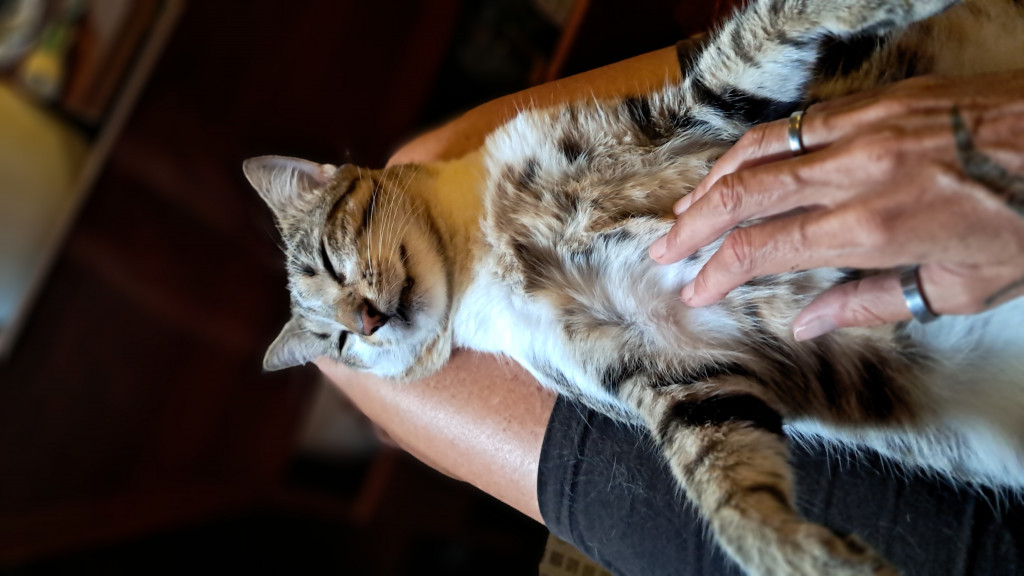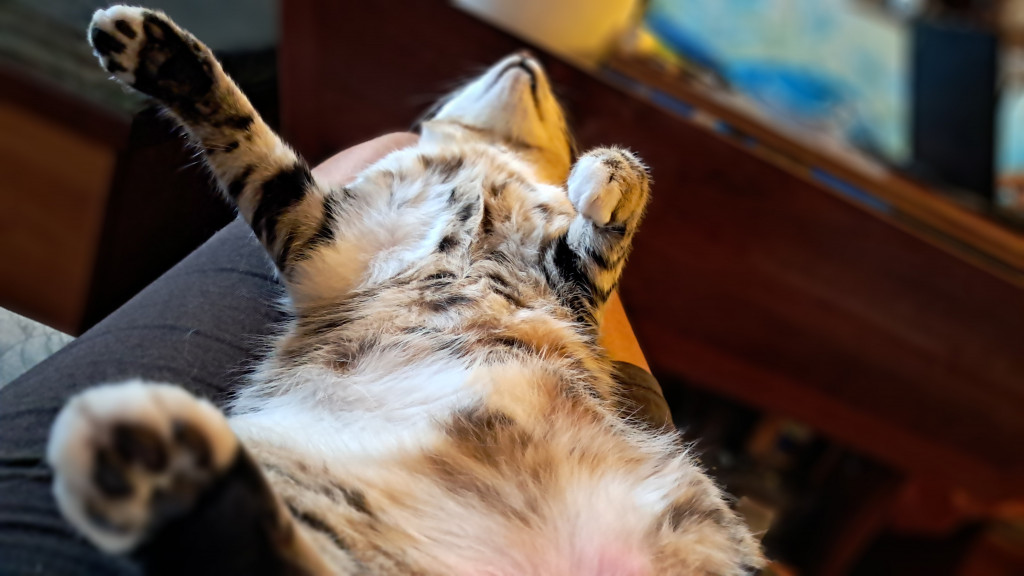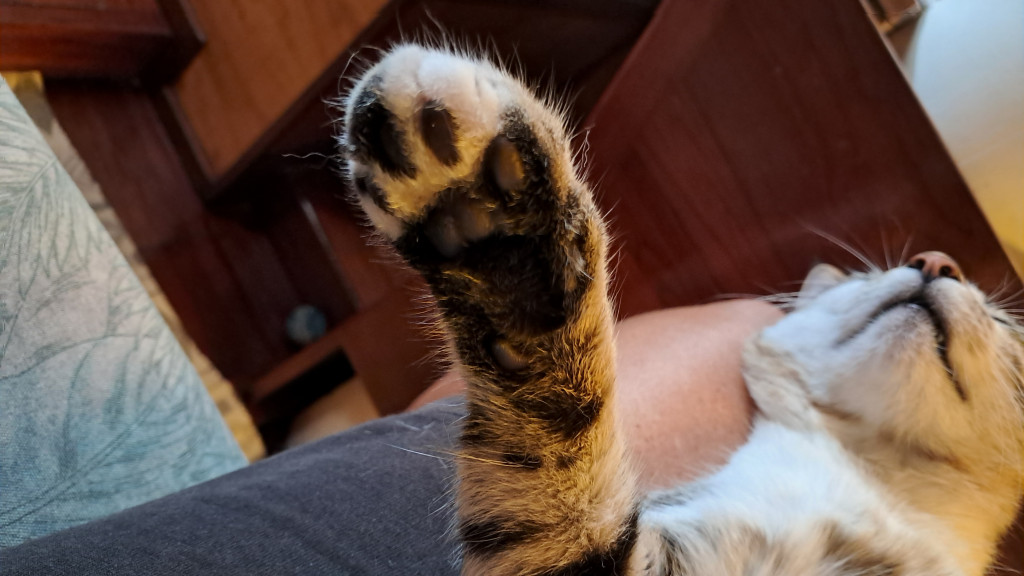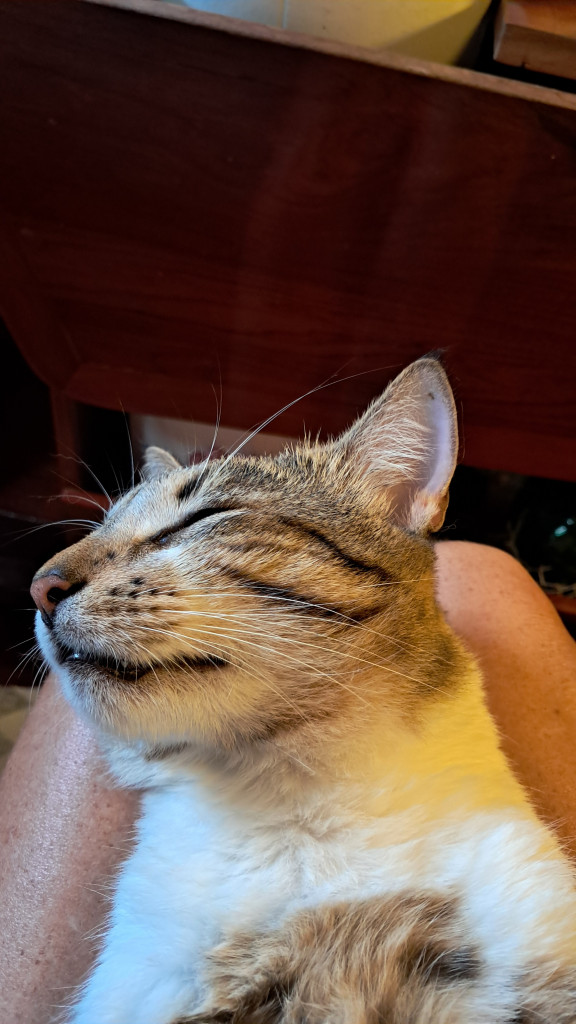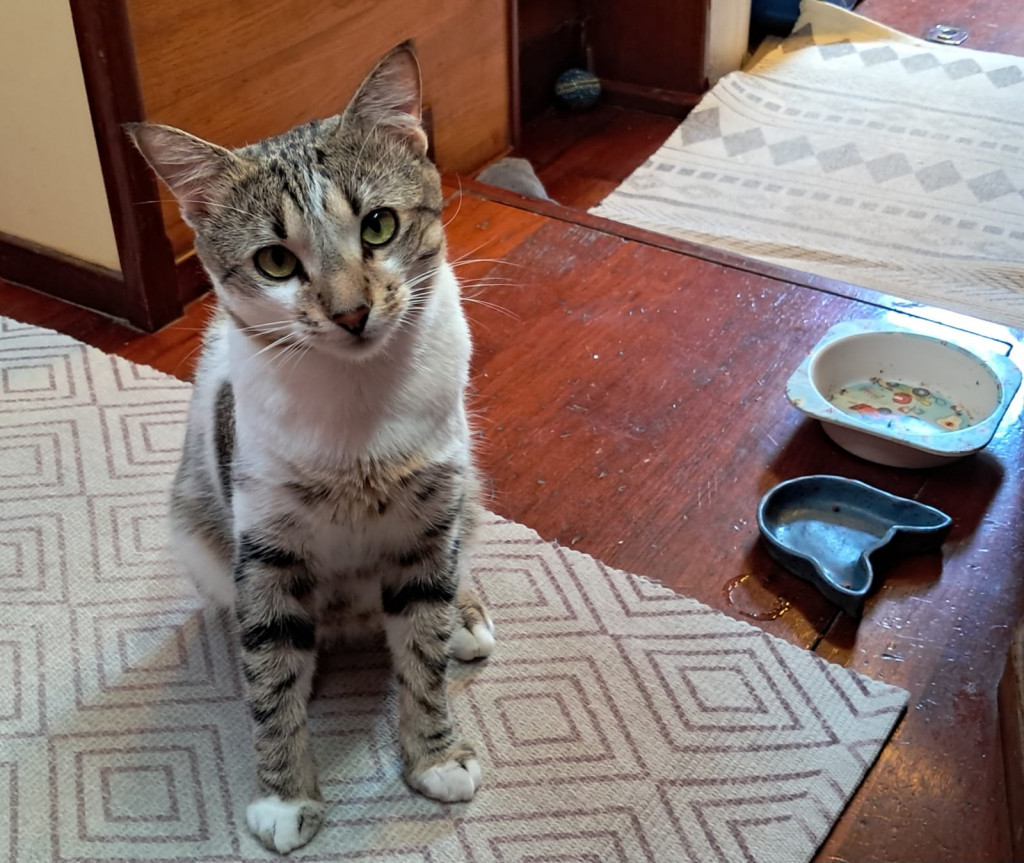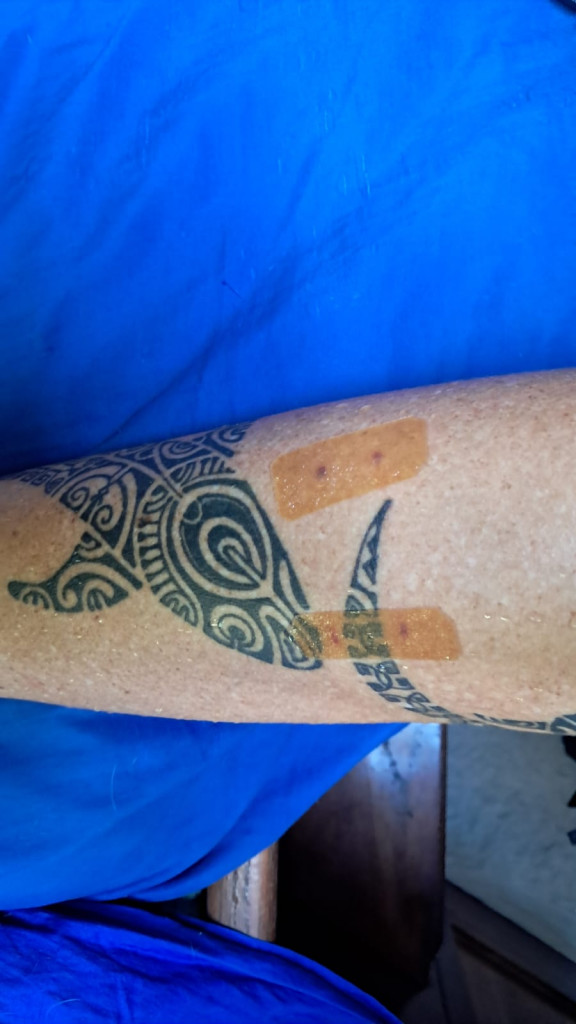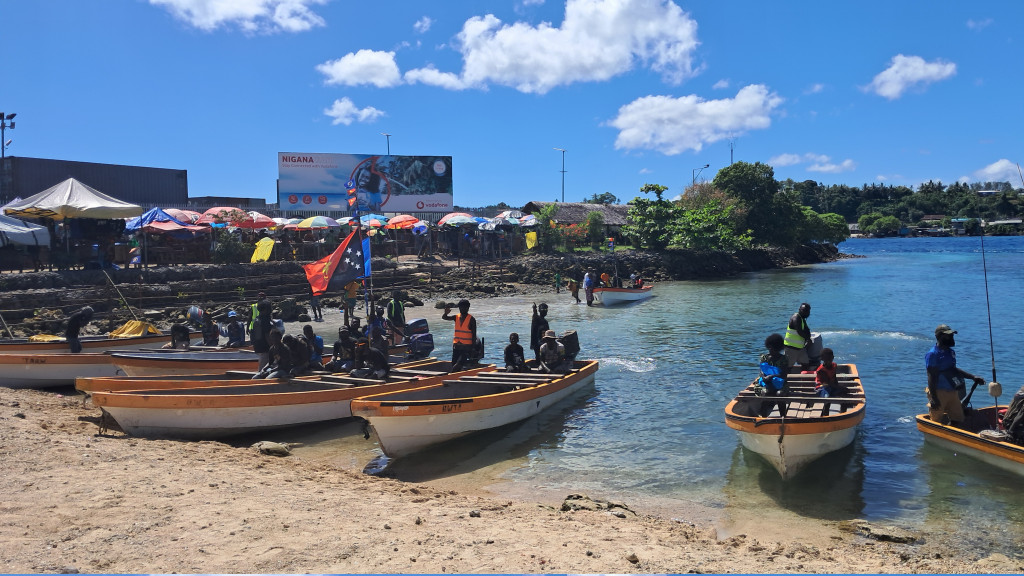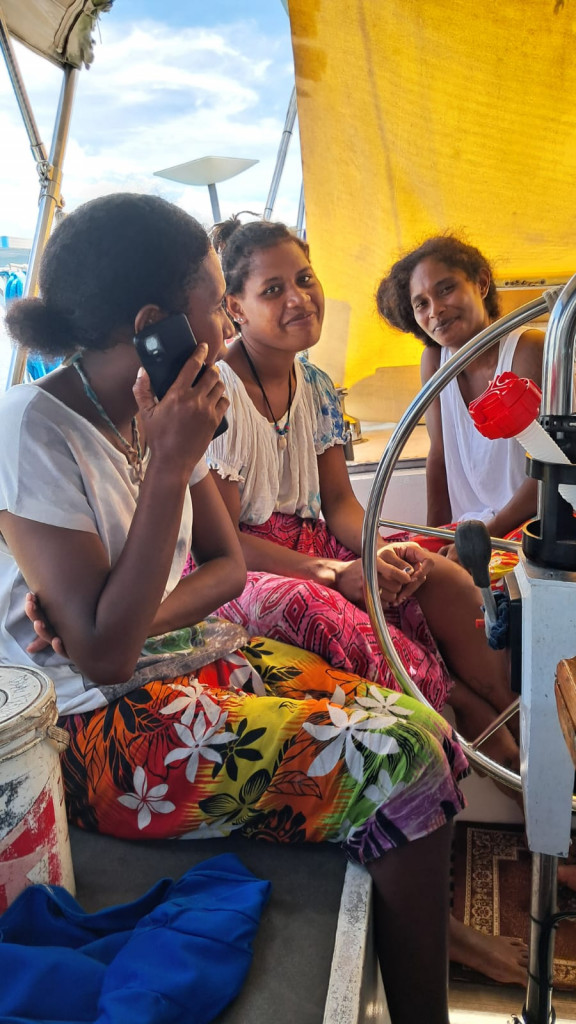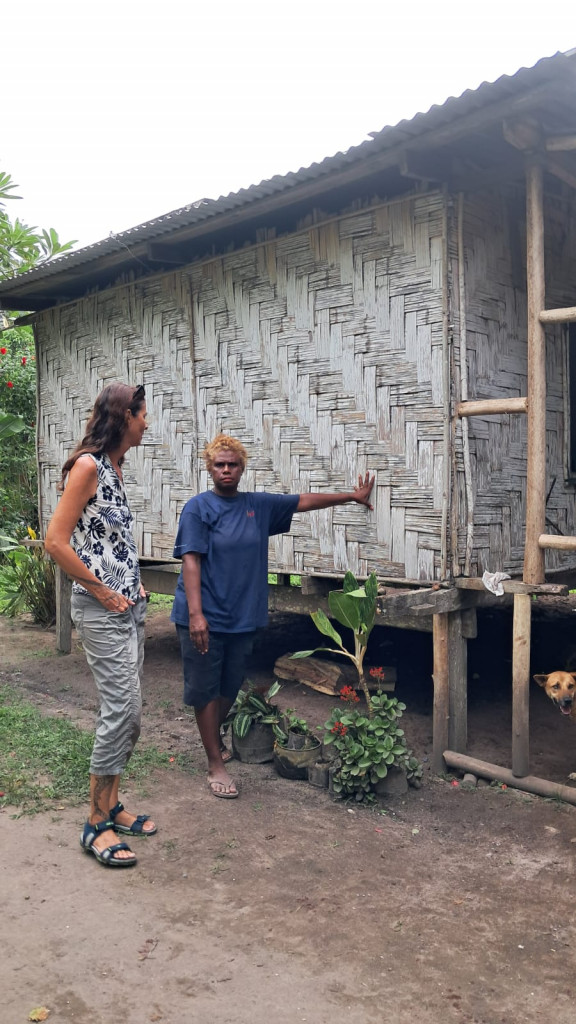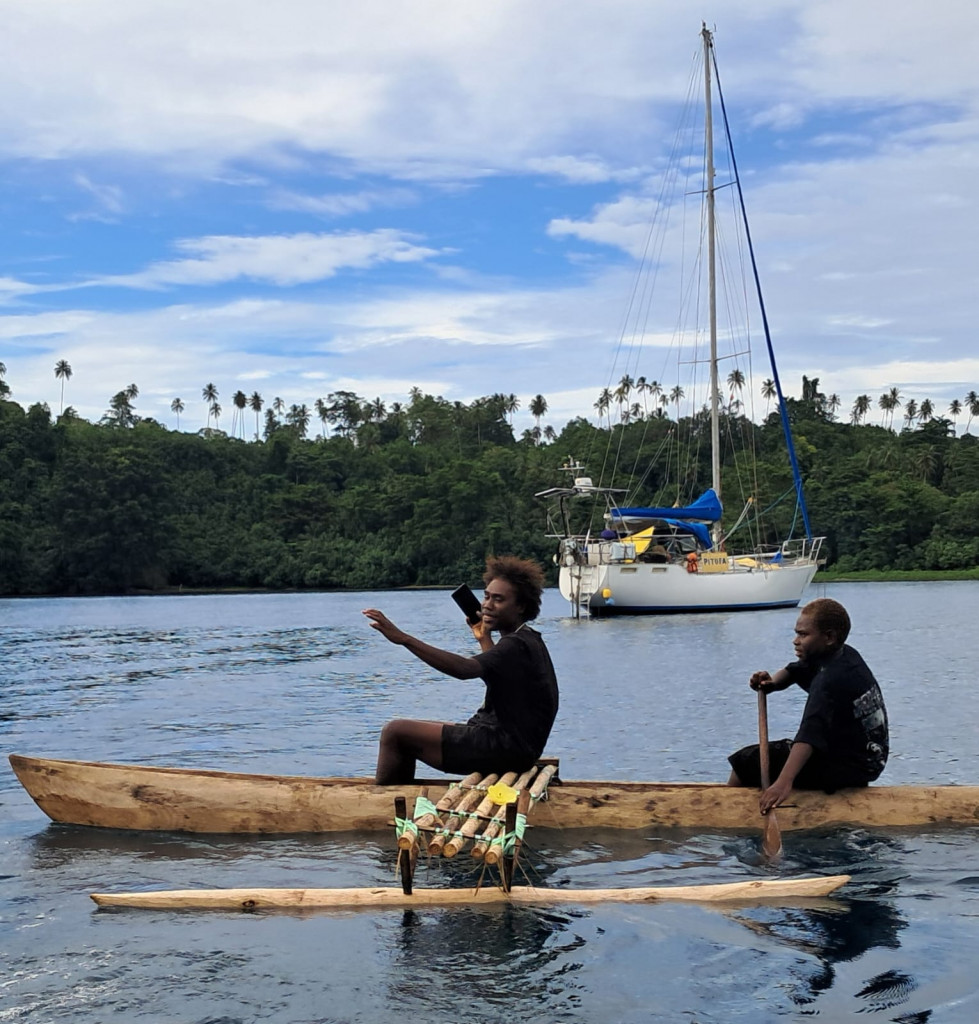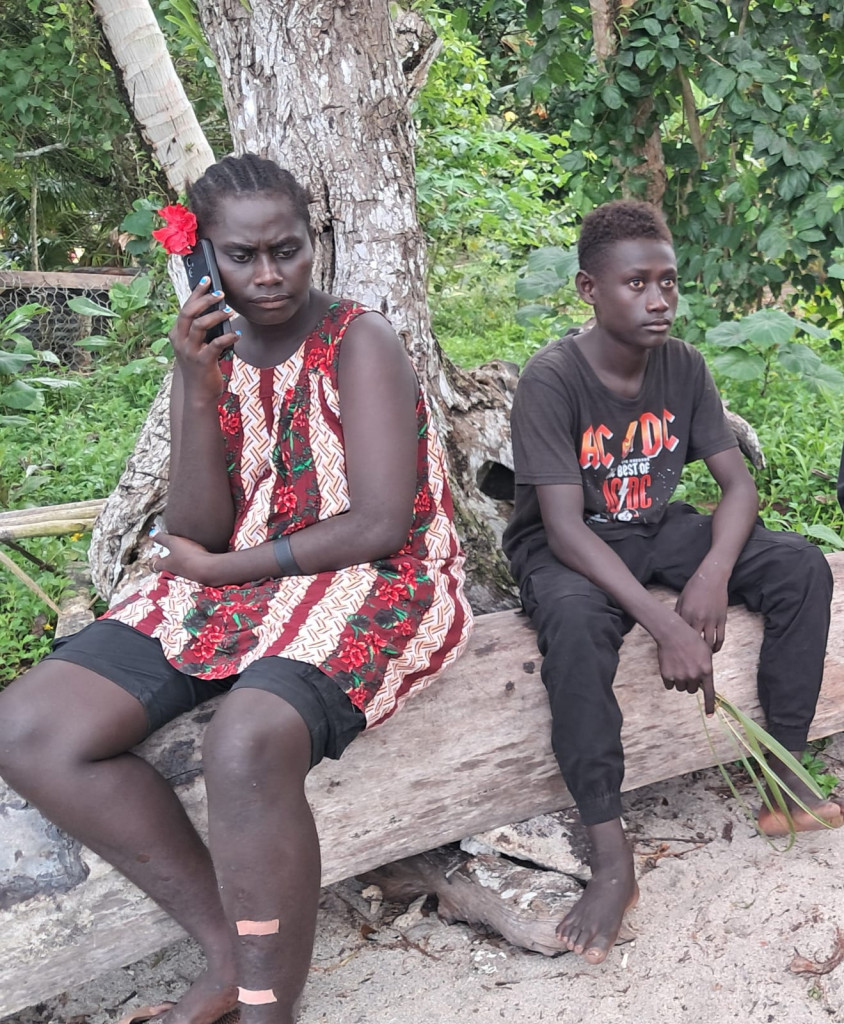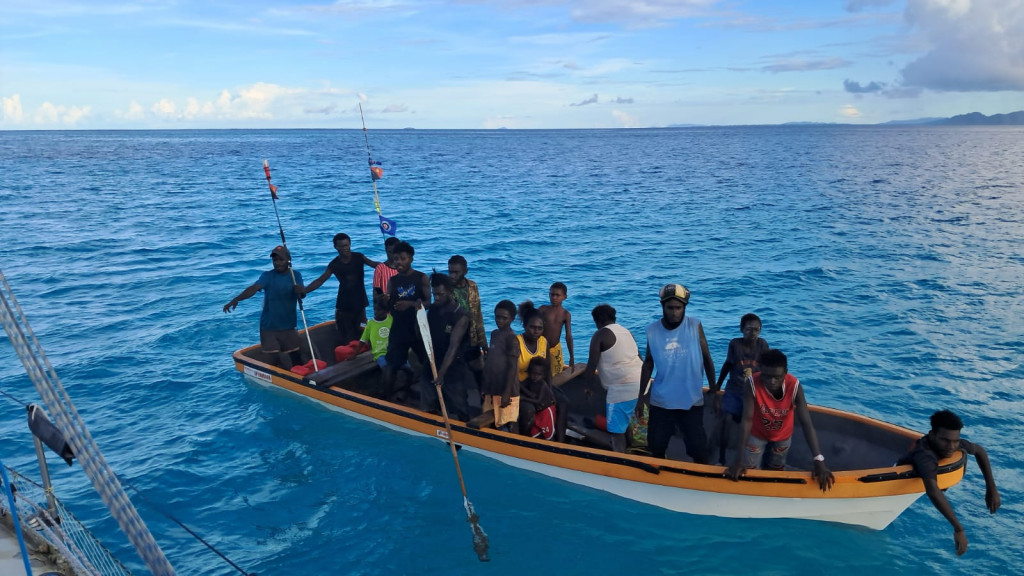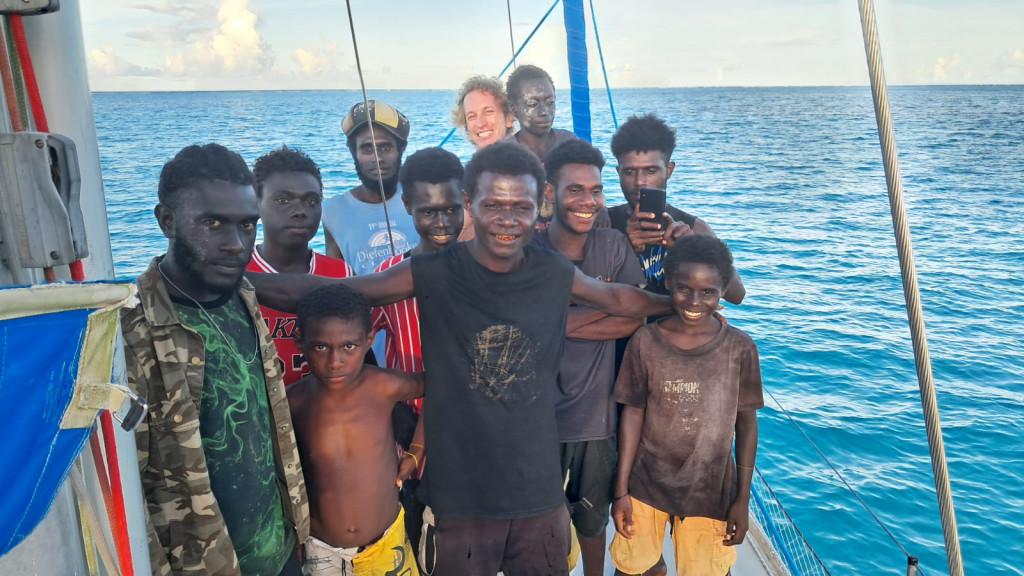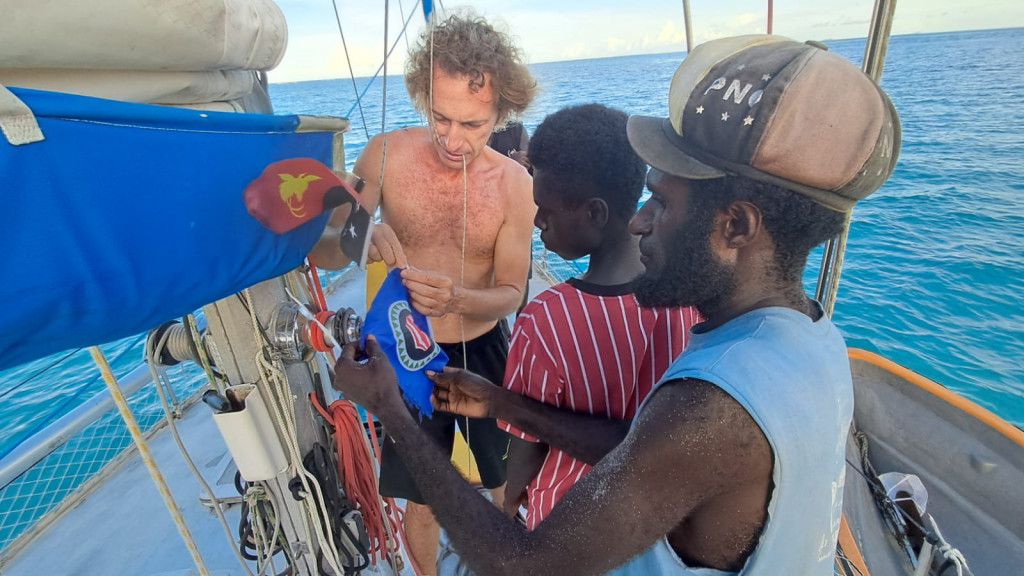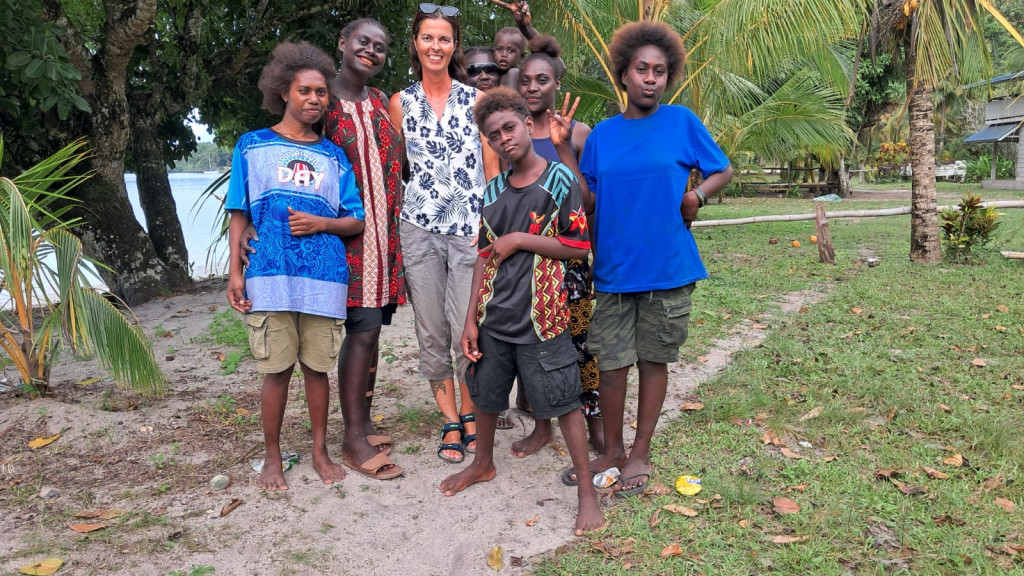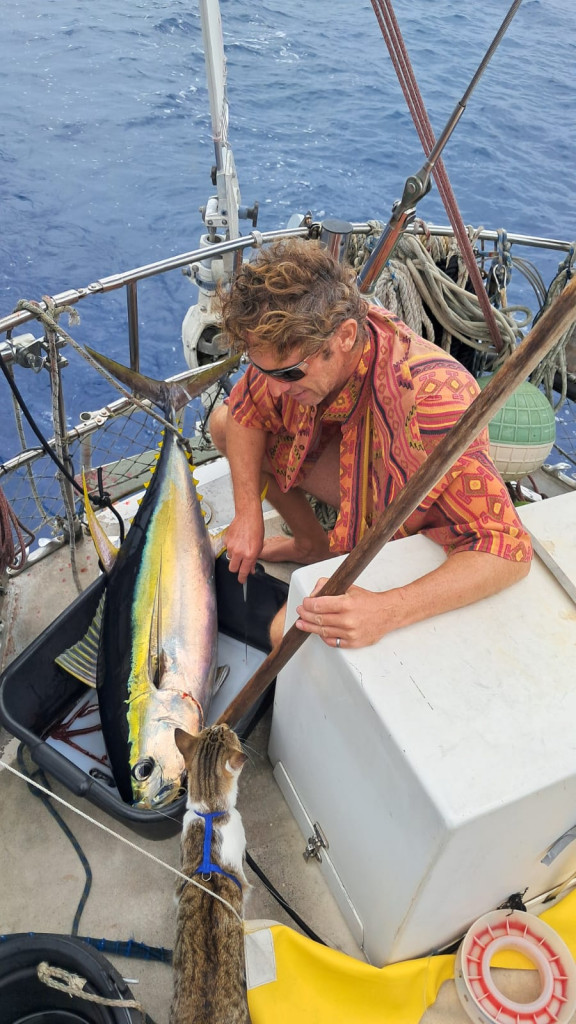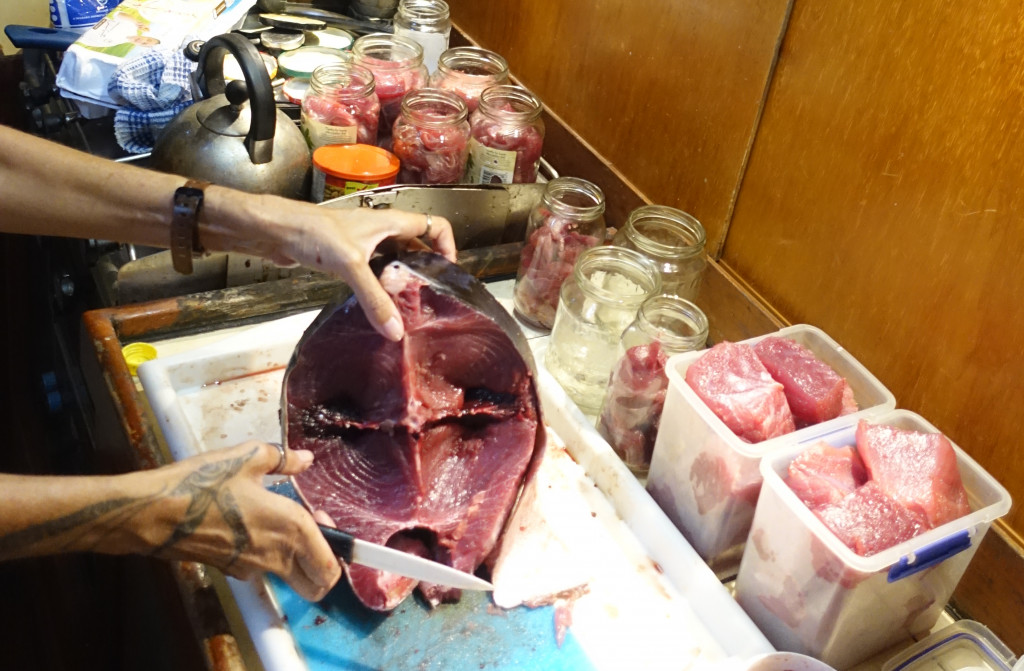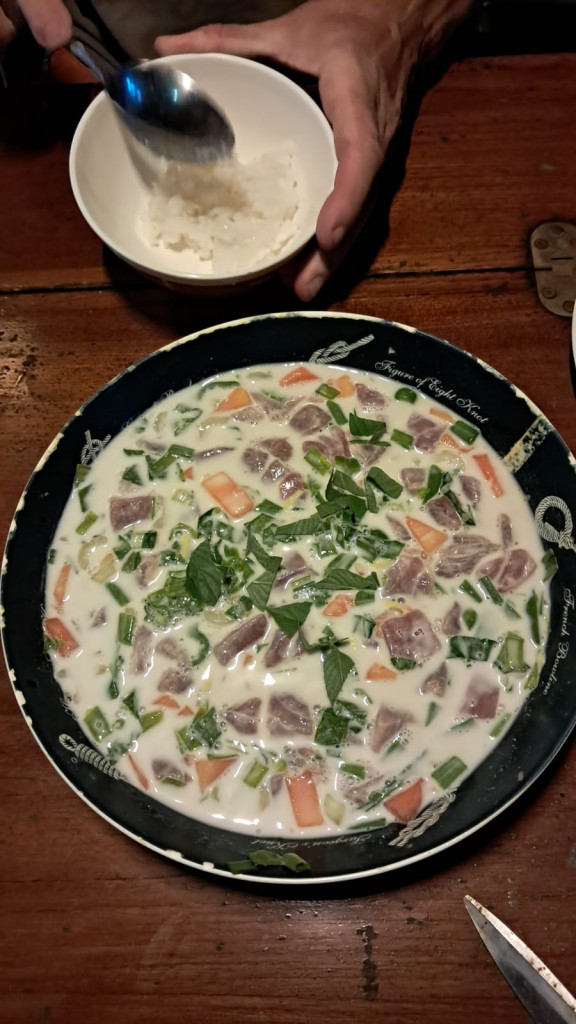I get a real kick out of inventing creative dishes with only local ingredients, so cool to eat something that has never been made in that form before AND tastes good 
On the Polynesian outliers here in Micronesia not much is grown, just breadfruit, papaya, bananas and taro (and we’re not big fans of taro). Fortunately both breadfruit as well as papaya are super-versatile cuisine ingredients and can be made into a range of dishes. The locals eat papaya as a sweet fruit when ripe and breadfruit is usually either grilled whole in an open fire or boiled and mashed into a pulp (poi).
I like to use papaya mainly while it’s still dark green, then it can pose as a range of vegetables: grated as cucumber in a tsatsiki (with yoghurt or kefir), sliced and fried as fake bamboo shoots in a stirfry, or sliced and cooked in a Thai curry or Italian risotto (posing as courgette).
With breadfruit we also try to catch it before it gets soft and sweet. When the fruit is still firm, but no longer rock hard (usually a day or two after picking), I peel it, cut it into wedges and steam those until they get soft (try with a fork, just like with potatoes). Once they are steamed, you can either just fry them as thin wedges in a pan and have them as a side-dish or with dips.
Or you can mash the still hot, steaming wedges into a dough, similar to a potato dough!
Here’s my “recipe” for breadfruit gnocchi with green papaya and tuna sauce. I never weigh ingredients, plus the consistency of the dough depends very much on how ripe the breadfruit was, how soft it’s steamed, etc., so I can’t give you exact measurements, it’s more like a guideline to get going and creative with breadfruit yourself, if you’re out here in the Pacific!
Take 1 small breadfruit or half a big breadfruit and steam it for 10 to 20 minutes on the stove until soft. Take the smoking hot pieces, cut them into pieces, add an egg (if you have one), 2 to 3 spoonful of kassava flour (or potato flour), quite a pinch of salt and mash everything into a dough. If it feels too dry, add another egg (or a little bit of water and olive oil if you’re out of eggs). If it feels to gooey, add a bit more flour 
Form tiny little dumplings, bring a pot with salted water to the boil and throw in the gnocchi. Boil for a couple of minutes, then remove the pot from the fire and let the gnocchi simmer a bit, before draining them in a pasta sieve.
For the sauce: Grate a piece of papaya, chop some garlic and fry those two ingredients lightly in olive oil (salt and pepper according to taste), add tuna pieces and sear them briefly. Add a sip of white wine (or home-brew cider if you don’t have white wine or a few drops of vinegar if you have neither wine nor cider) simmer briefly, add some cream (or milk powder and and a spoonful of corn starch stirred in some water) and serve with the gnocchi!
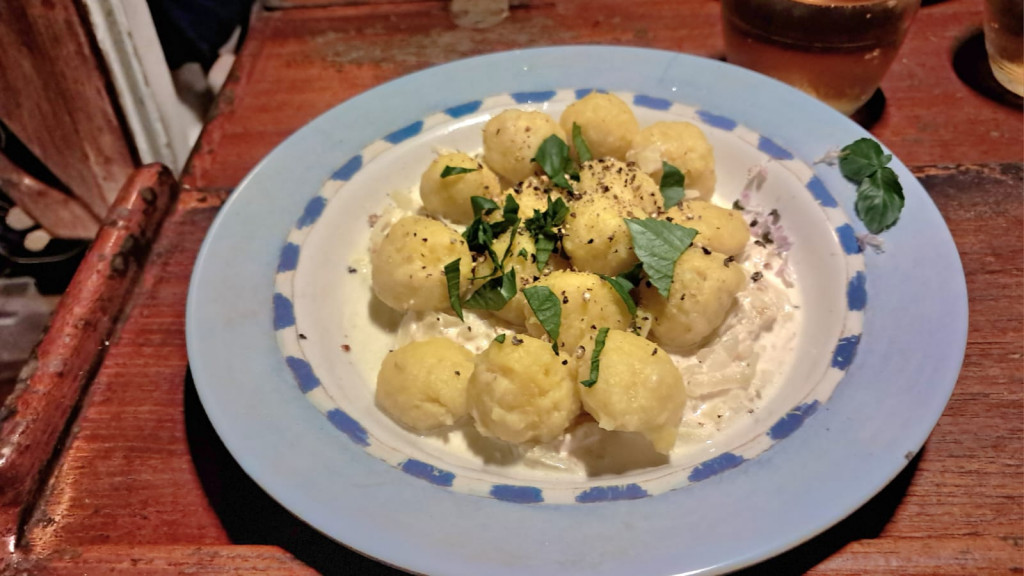
And here’s a recipe guideline for breadfruit tatties with tuna carpaccio:
Prepare the carpaccio an hour or two ahead. You can either do a classic Italian recipe, but I prefer a somewhat tastier Asianised version: Finely chop sashimi-quality pieces of tuna, add some finely chopped ginger, capers or gherkins and ideally some chopped carrots, leeks or celery (if you have). Spice the carpaccio according to taste with some chopped chilis or chili-oil, fish-sauce, vinegar (from the gherkins) and sesame oil. Mix everything and put it into the fridge.
Steam the breadfruit and make a dough similar to the gnocchi dough, but it doesn’t have to be quite as smooth. You can add seeds (linseed, sunflower seeds, etc.) or oats or whatever you have available. Then form patties and fry them with some olive oil until golden.
Serve the patties hot or cold with the carpaccio, sprinkle some homegrown basil on top (if you have a boat garden) and enjoy with wine or cider, but preferably after a nice day in a turquoise lagoon 
